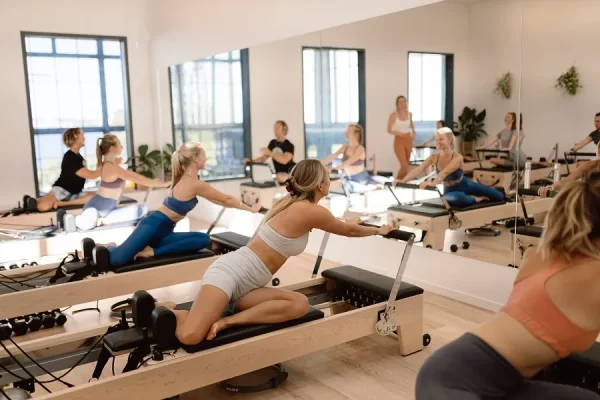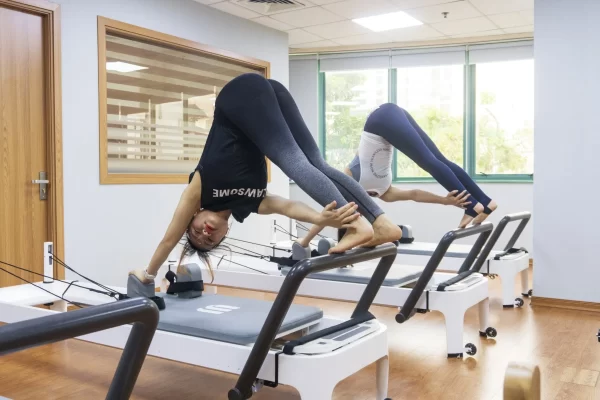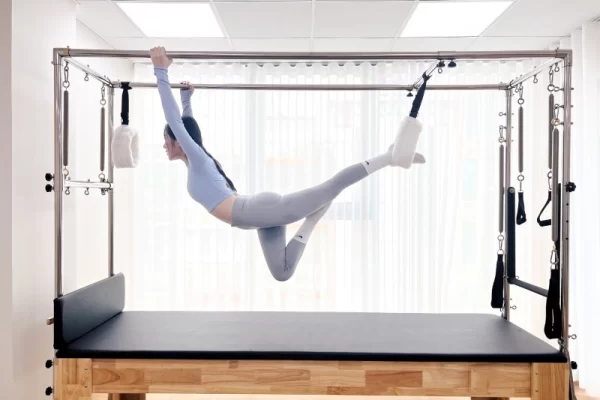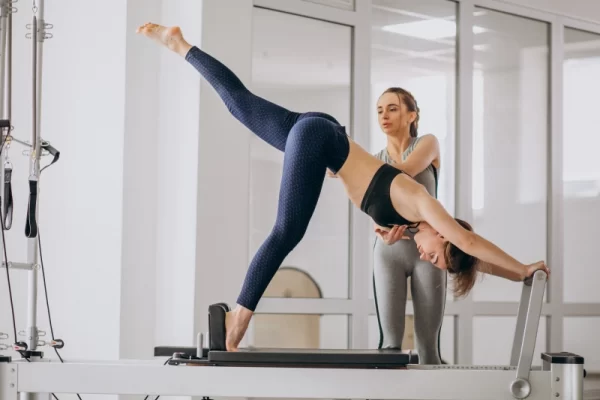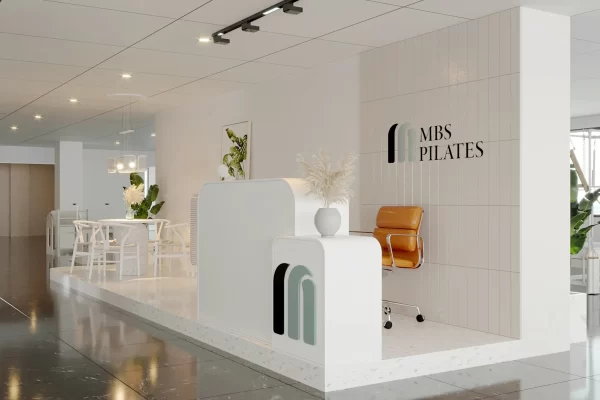Breathing in Pilates: The secret to effective and safe training
18/11/2025Breathing, a natural and unconscious reflex of the body, is the core key to Pilates. Understanding and practising proper breathing not only enhances the effectiveness of your workouts but also improves overall health, helping you connect more deeply with your body. So, how do you breathing in Pilates? Why is it necessary to practise breathing? And how do you practise it? This article will help you answer all those questions while guiding you on how to breathe correctly to enhance the effectiveness of each session.
Why is proper breathing the foundation of Pilates?
Joseph Pilates, the founder of Pilates, once said: ‘Breathing is the first act of life, and also the last… above all, learn to breathe correctly.’ For him, breathing was the ‘bridge’ connecting the mind and body.
While many sports focus on rhythm, speed or strength, Pilates emphasises control, balance and overall connection. Breathing correctly is the first requirement for achieving this.
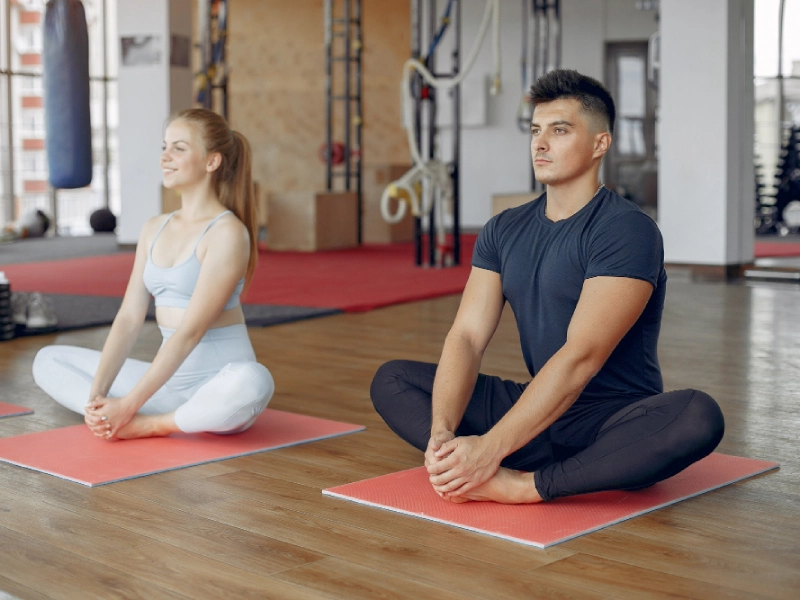
Breathing correctly is extremely important in Pilates.
Breathing also helps coordinate the movements in Pilates. When you inhale, your muscles relax and prepare for the next movement. When you exhale, your muscles contract, generating the strength to perform the movement. Coordinating your breathing with your movements helps you perform the exercises smoothly and enhances the connection between your body and mind.
The benefits of proper breathing in Pilates
Whether you are a beginner or have been practising for years, focusing on breathing technique is always a key factor in maximising the benefits of this discipline. This is because when you breathe correctly in Pilates:
- You activate your core muscles, the centre of your body including your abdomen, lower back, hips and pelvis.
- You improve your focus and presence, making each movement more intentional.
- You increase your body control, reducing the risk of injury, especially to the lower back.
- You help oxygen circulate evenly throughout your body, supporting recovery and movement, and performing exercises more effectively.
- You reduce stress and anxiety as deep, slow breathing stimulates the parasympathetic nervous system, helping the body relax.
For anyone choosing Pilates, familiarising yourself with breathing techniques is extremely important. This is the preparatory step, both physically and mentally, for the entire session, helping to optimise its effectiveness.
Breathing techniques in Pilates
Pilates uses two main breathing styles: deep breathing (breathing using the diaphragm and abdomen) and oblique breathing (side breathing). Each breathing style has its own characteristics and benefits.
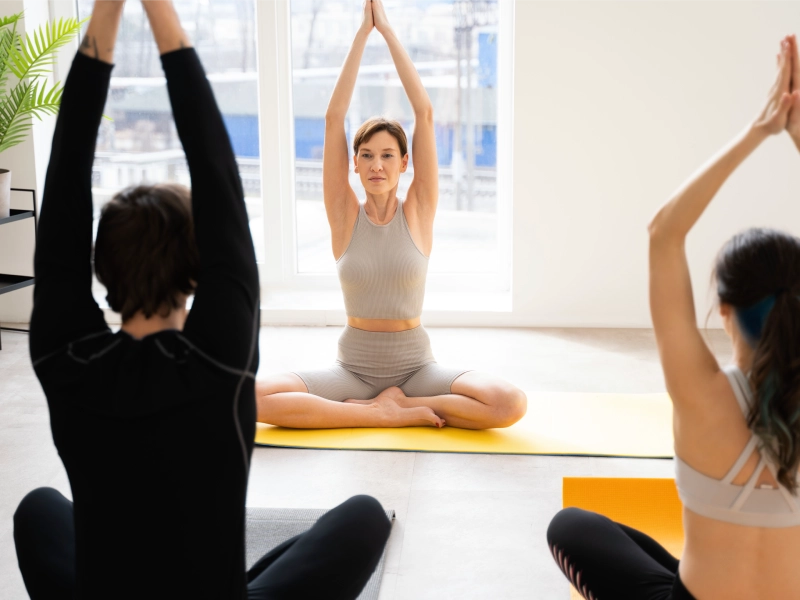
Pilates uses two main breathing techniques: deep breathing and oblique breathing.
1. Deep breathing (breathing using the diaphragm and abdomen)
Deep breathing pushes air throughout the body, causing the abdomen to expand when inhaling and deflate when exhaling, with the diaphragm moving in the opposite direction.
How to perform:
- Lie on your back on the floor, legs straight, hands at your sides.
- Inhale through your nose, expanding your lower abdomen and rib cage.
- Exhale through your mouth, drawing your abdomen in and tightening your pelvic floor muscles.
- Keep your face and shoulders relaxed throughout the breathing process.
Benefits:
- Supplies more oxygen to the brain and muscles.
- Helps muscles relax and prepares them for the next movement.
- Strengthens the connection between mind and body.
- Reduces stress and anxiety.
- Improves blood circulation.
- Boosts the immune system.
2. Side breathing (oblique breathing)
This is the main breathing technique in Pilates, providing a large amount of oxygen to the blood, reducing stress and increasing lung capacity.
How to perform:
- Sit upright on the floor with your legs straight and your hands on your hips.
- Inhale through the nose, slowly and evenly expanding the rib cage on one side.
- Exhale through the mouth, contracting the rib cage on that side.
- Repeat the same movement on the other side.
- Keep the facial muscles and shoulders relaxed throughout the breathing process.
Benefits:
- Enhances flexibility of the spine and muscles.
- Improves posture.
- Reduces back pain.
- Improves respiratory function.
Notes:
- When starting out, focus on breathing with the diaphragm and abdomen. Once accustomed, move on to side breathing.
- Adjust your breathing rate to suit the intensity and objectives of the exercise.
- Listen to your body and adjust your breathing rate if necessary.
- If you encounter difficulties, consult a Pilates instructor.
Practical guide to breathing in Pilates
Breathing correctly in Pilates means you will feel your ribs expand as you inhale and contract as you exhale.

Practising proper breathing in Pilates.
Step 1: Place your hands on your rib cage:
- Sit comfortably on the floor or exercise mat, placing your hands under each side of your rib cage.
- As you inhale, feel your rib cage expand. Familiarise yourself with this sensation as you breathe.
Step 2: Breathe deeply through your nose:
Inhale deeply through your nose. Explore your lung capacity without forcing your lungs to work too hard. Feel your chest expand as your lungs fill with air.
Step 3: Exhale completely through your mouth:
Exhale gently through your mouth until your lungs are empty. Feel your rib cage contract.
Step 4: Repeat:
Repeat the above steps several times to become familiar with breathing in Pilates.
Common mistakes to avoid when breathing during Pilates
To optimise the effectiveness of Pilates exercises and avoid harm, keep the following in mind:
- Avoid holding your breath: Holding your breath is a mistake. Muscles that do not receive enough oxygen will become fatigued, dizzy, and may even faint. Therefore, breathe steadily throughout the exercise.
- Keep your facial and shoulder muscles relaxed: Tension in the facial and shoulder muscles affects your breathing rhythm.
- Keep your facial and shoulder muscles relaxed to breathe easily and comfortably.
- Focus on the sensation of your muscles and breathing: When inhaling, feel the expansion of your rib cage and abdominal muscles. When exhaling, feel the contraction of your muscles. Focusing on the sensation helps regulate your breathing and increases the effectiveness of the exercise.
- Listen to your body and adjust your breathing if necessary: Everyone has a different breathing rhythm. Listen to your body and adjust your breathing to suit the intensity and goals of the exercise. If you feel tired or short of breath, slow down or pause to catch your breath.
- Consult your Pilates instructor: If you have difficulty breathing, consult your Pilates instructor. They will guide you on how to breathe correctly and adjust the exercises to suit your physical condition.
Distinguishing between correct and incorrect breathing in Pilates
When starting Pilates, many beginners breathe incorrectly without realising it. Below is a comparison table between correct and incorrect breathing in Pilates to help you visualise and adjust:
| Criteria | Breathing correctly in Pilates
|
Incorrect breathing in Pilates |
| Form of breathing | Breathe through your nose (inhale) and mouth (exhale). | Breathe only through your nose or only through your mouth throughout the session. |
| Depth of breath | Breathe deeply, evenly, and in a controlled manner. | Shallow, short, irregular breathing |
| Breathing and movement | Combine your breathing with each specific movement. | Breathing not in sync with movements, easily becoming disordered and losing control of movement. |
| Shoulders and neck when breathing | Relax, do not lift your shoulders when inhaling. | The shoulders rise, the neck stiffens when breathing. |
| Impact on the core muscles | Engage your core muscles, deep abdominal muscles and pelvic floor as you exhale. | Failure to control the core area can easily lead to technical errors. |
| Effectiveness | Enhance body awareness and concentration. After the session, feel relaxed and alert. | Easily loses concentration, moves erratically or uses the wrong muscle groups. After training, feels tired, tense and achy. |
Tips for proper breathing adjustment:
- Place your hands on both sides of your ribs during practice to feel the even expansion when inhaling.
- Practise slow, controlled breathing for 5–10 minutes daily, even when not doing Pilates.
- Listen to the instructor, especially when they guide your breathing in sync with movements.
- Avoid shrugging your shoulders or pulling your neck in when taking a deep breath, as this indicates you are using the wrong muscle group to breathe.
How does breathing in Pilates differ from breathing in Yoga?
Although both Yoga and Pilates emphasise breathing, there are fundamental differences between the two disciplines.
1. Breathing techniques in Yoga
– Breathing techniques: Yoga incorporates various breathing exercises, with practitioners typically guided to use nasal breathing appropriate for each movement and posture. Basic breathing in yoga involves inhaling deeply and slowly through the nose, followed by a strong exhalation also through the nose, ensuring the breath is audible.
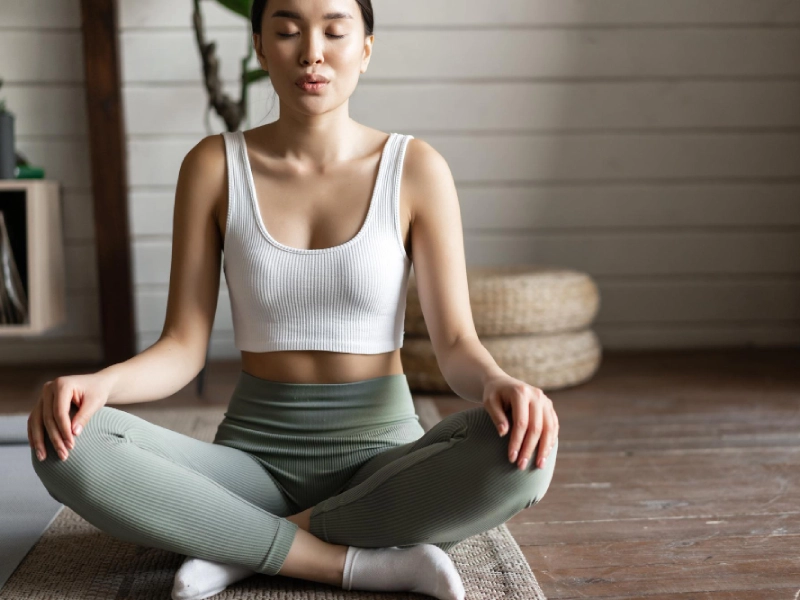
Breathing in Yoga.
– Purpose: Breathing in yoga is often aimed at relaxation, regulating the body, and enhancing concentration. Regular, controlled breathing helps improve meditation ability and the connection between body and mind.
– Effects: Breathing through the nose in yoga helps warm the air before it enters the lungs, filters the air, and maintains moisture in the body.
2. How to breathe in Pilates
– Breathing technique: In Pilates, a series of movements are performed continuously by certain muscle groups. Breathing differs from yoga in that you inhale deeply through the nose and exhale through the mouth to provide more oxygen to the brain and core muscles, which is sufficient for high-intensity exercise.
– Purpose: Breathing in Pilates supports muscle movements, helps maintain spinal stability and increases the effectiveness of core exercises.
– Effects: Exhaling through the mouth helps to quickly remove carbon dioxide, reduces pressure on the muscles and improves training performance. Breathing correctly also helps to regulate the heart rate and reduce stress on the body.
Both breathing methods are important and specific to each discipline, helping to optimise the effectiveness of the exercises and improve overall health.
Breathing in Pilates is an essential skill for maximising the benefits of each session. Do not overlook the importance of breathing, as it not only helps you perform movements more accurately but also enhances your overall health. Make breathing in Pilates a habit in every session so you can experience positive and lasting changes.

